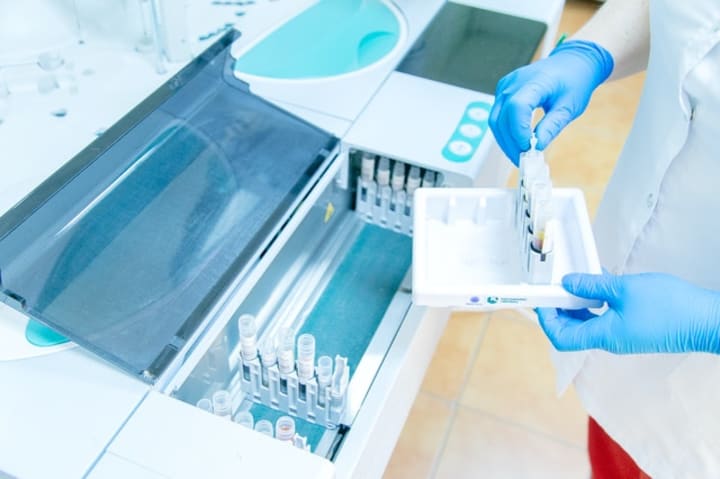Two Questions and a Wait in Children's Emergency
Condensed version

Trigger Warning: The following story discusses pediatric emergency situations and has video footage of emergency rooms with children but (spoiler alert) it's all okay in the end.
Early on in my presentation, I asked two questions central to my topic to engage the assessment panel, so they could feel just a little bit of what I felt.
My choice of elective clinical placement was strategic.
Children scared me.
Not in the general sense, but the medical kind. A week of clinical placement in the children’s division of the Emergency Department (ED) would position my valid concerns front and center, laying them bare prior to the conclusion of my healthcare professional degree training.
Everyone from practitioners to paramedics had shared with me over the years the stories of how children could make chump change of your medical expertise. With still developing body systems, children could appear well despite being seriously unwell; going from zero to one hundred plus intensity within seconds, losing consciousness, or having a grand mal seizure. Pediatric patients compensate as far as body mechanisms are able to cope until suddenly, they are not. Then, peds patients can become a plummeting challenge to stabilize.
That is why children scared me.
True terror is uncontrolled bleeding in a child. To say that head injuries or respiratory arrest in infants or toddlers who are preverbal is a demanding task is an understatement. They cannot tell you where it hurts most at the best of times, let alone when frightened or in pain, while in an alien environment with a bunch of strange faces around them. When children arrived in the Resuscitation Bay (aka RESUS or Trauma), the staff contained emotion-focus was palpable. Nobody wants to lose a child.
"Everyone thinks that it won't be them." —ED Staff Phoenix Children's Hospital
Fantastic mentors and supervisors supported me early in my training to find the rainbow pot of gold for pediatric assessment that anchored me before the end of my first shift.
“Obs (as in blood pressure, pulse, etc.),” my mentor said, “are key.”
She continued, “A child may look well, but their physiological status reveals through the readings. Always pay attention to the obs.”
By the third shift, I had participated in three back-to-back, pediatric trauma cases in one afternoon with my mentor and trained staff. They consisted of two seizure patients and a severely hypoglycemic type 1 diabetic preteen. I tried to distract the young student through tense moments while attempted venous access for blood tests and an IV line was repeatedly unsuccessful. All of my nerves had been threshed and reconfigured by the time the nurse instructed me to page the emergency pediatric doctor.
Later that evening, while the surgeon observed, I helped to hold a baby whose fingers had been mangled badly after a domestic accident. Her parents stood grief-stricken on the sidelines. As a parent, I had been concerned that I would cry during incidents like these. Not that there is anything inherently wrong with being an emotional human, but tears would impair my vision, then I would be of no help to anyone.
I had seen the Pediatric Emergency Department full to day-care dimension capacity as well as all but empty. In the waiting area, various sized toys able to withstand disinfectant wiping flooded every color to distract and engage recipients. Books of multiple reading levels lay in no particular order whatsoever amidst small tables and chairs while a Disney Pixar movie played onscreen overhead.
As with other trainees, I learned early on never to say or repeat the “Q-word.” Whether on the ward or in a department, it was anathema. A stone-cold jinx that invited bedlam and steely glares from every employee within earshot.
Never comment on how quiet it is.
So, it was rather slow when a mother approached the triage office and politely asked,
“Why have we been waiting so long when there are only three children here?”
Close to three hours, all of the patients had been triage assessed by my mentor and awaiting examination by an ED doctor.
My mentor was immediately empathetic in explaining.
“There is one set of ED doctors who have to cover all the patients over the entire department, not just the children’s division.”
A thousand clicks repeated successively in my brain, playing out an imaginary flash screen, over decades on fast forward inclusive of my long waits in the Emergency Room as a child. Numerous domino-effect snapshots unfiltered resounded in my mind.
The question never before heard asked.
Everyone waits and knows it is expected. Even with low patient numbers, I’d never known anyone to question why. Not even me.

A documentary played inside my head of process where patients entered the ED system at high volume and were triaged not just upon entry but multiple times in progress. This was happening through several departments, around investigations, and consultations over results throughout the entire hospital, all categorically, simultaneously triaged, analyzed, and independently coordinated 24/7, 365 days a year.
An Emergency Department that before my training, I had no clue existed behind the security doors with its multiple divisions, subdivisions, and sections.
Waiting for hours?
It astounded me that people were seen on the same day. A constantly changing landscape of casualties, patients in need of urgent care, ICU patients, helipad trauma arrivals, and cardiac arrests all requiring various lab work, x-rays, CT scans, emergency surgery, and the like in an unchoreographed miracle routinely accepted and almost taken for granted. It just so happens that every day lives are saved and sustained.

A dissertation topic fell in my lap.
Emergency Departments and wait times.
So…
Early on in my presentation, I asked two questions central to my topic to engage the assessment panel so they could feel just a little bit of what I felt.
“Can I see by a show of hands how many of you have attended an Emergency Department, whether for yourself or someone else?”
*All hands go up*
“Now, please tell me also by show of hands, how many of you knew the divisions within the ED prior to your healthcare professional degree training?”
*No hands go up*
It took me decades and the last semester of university training to even hear the question.
Letting precious seconds of silence fill the room before I continue, I wondered how many others knew the reasons why, they too, were still waiting.

Personal Note: If you enjoyed reading this story or any story on Vocal, please click on the heart below, and share in as many social media outlets as possible. It offers tremendous support for Vocal Creators. Connect with me personally on Twitter or just google thedaniwriter. I would enjoy hearing from you!






Comments
There are no comments for this story
Be the first to respond and start the conversation.